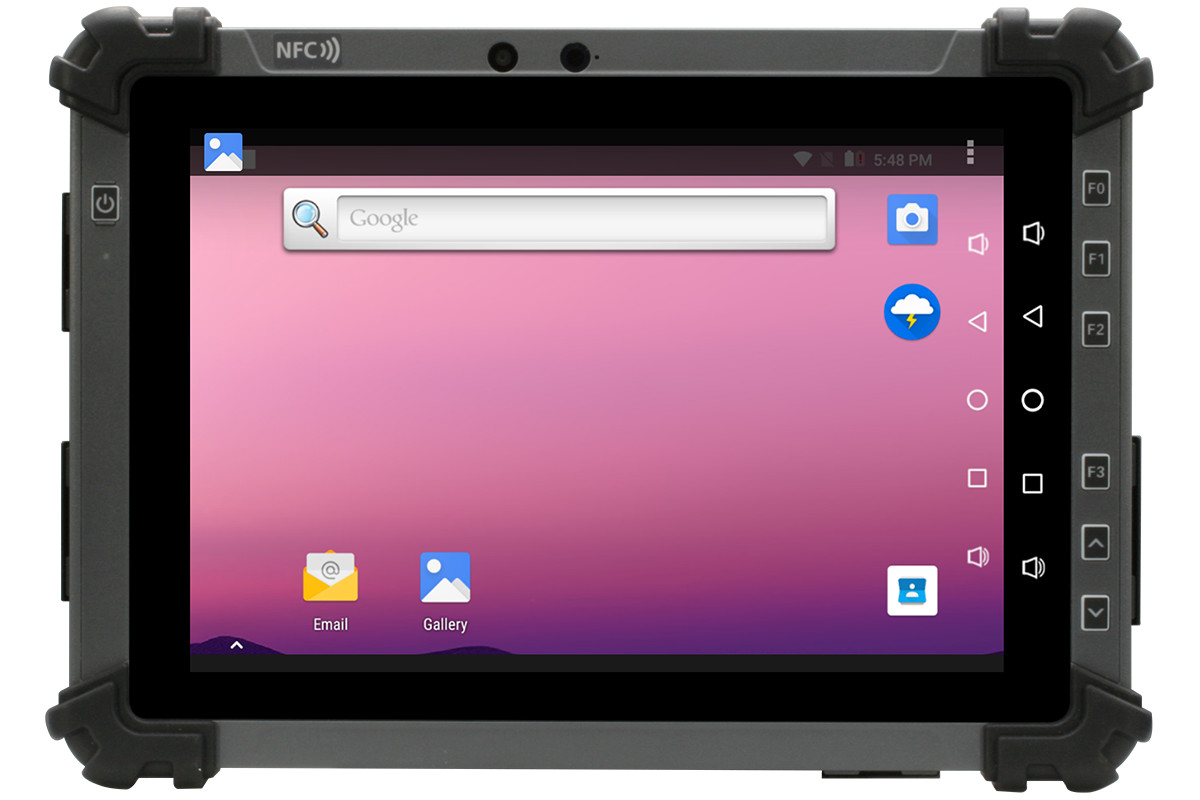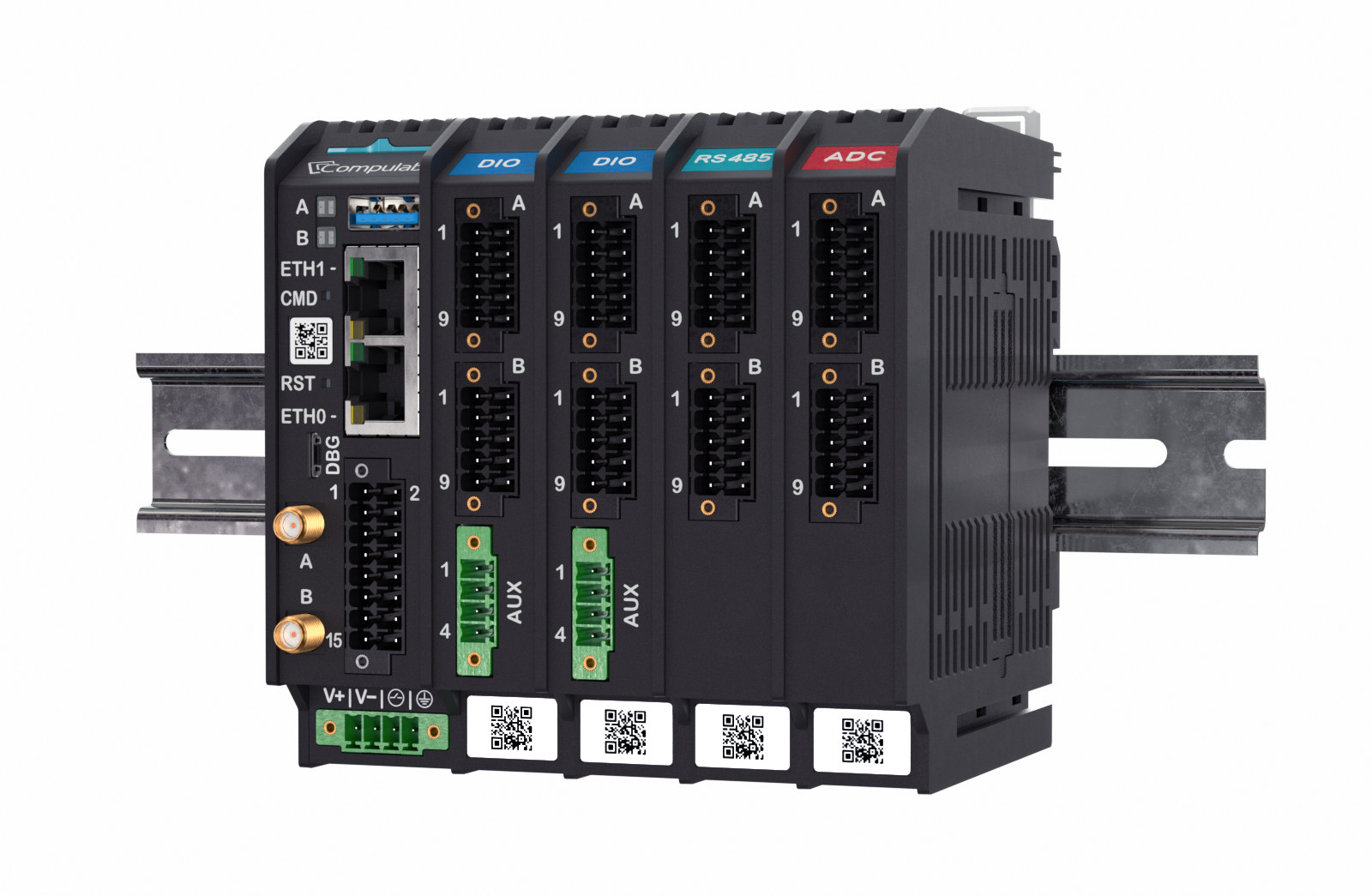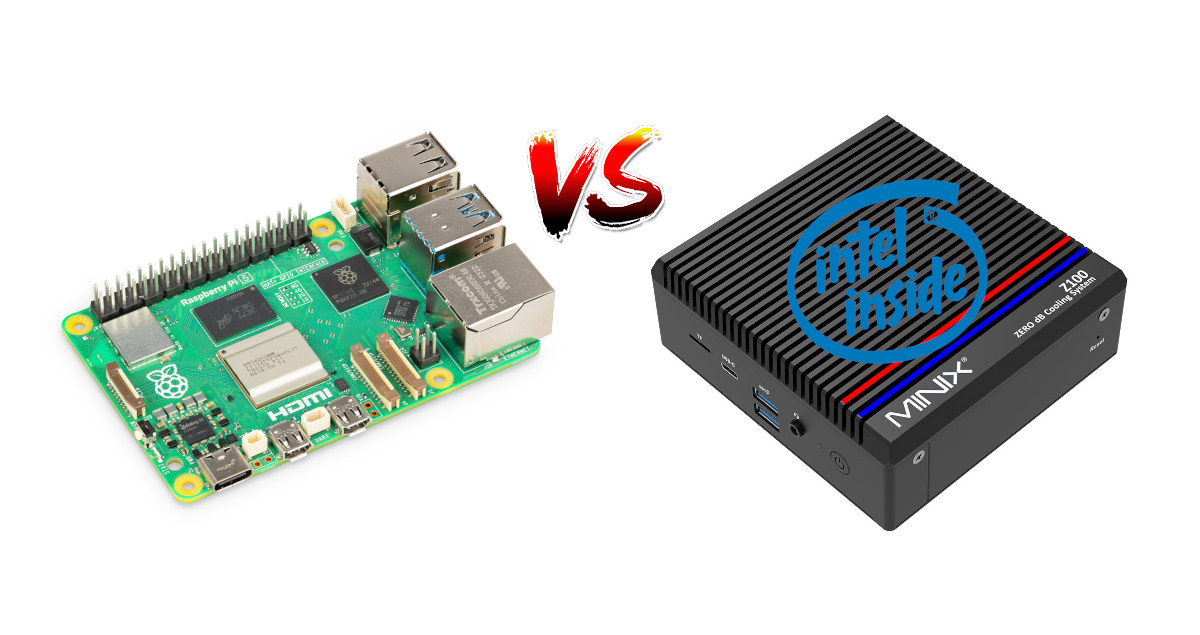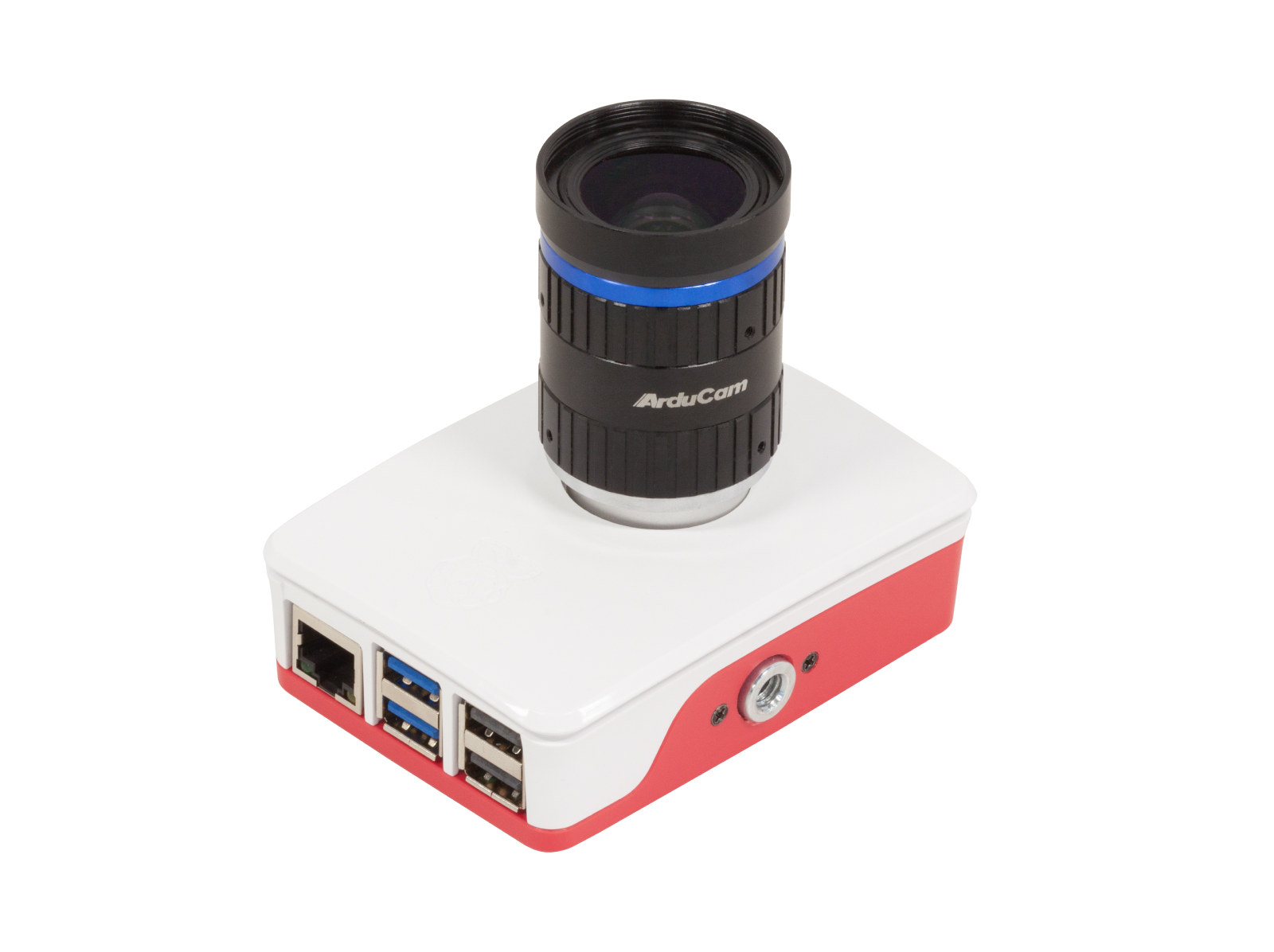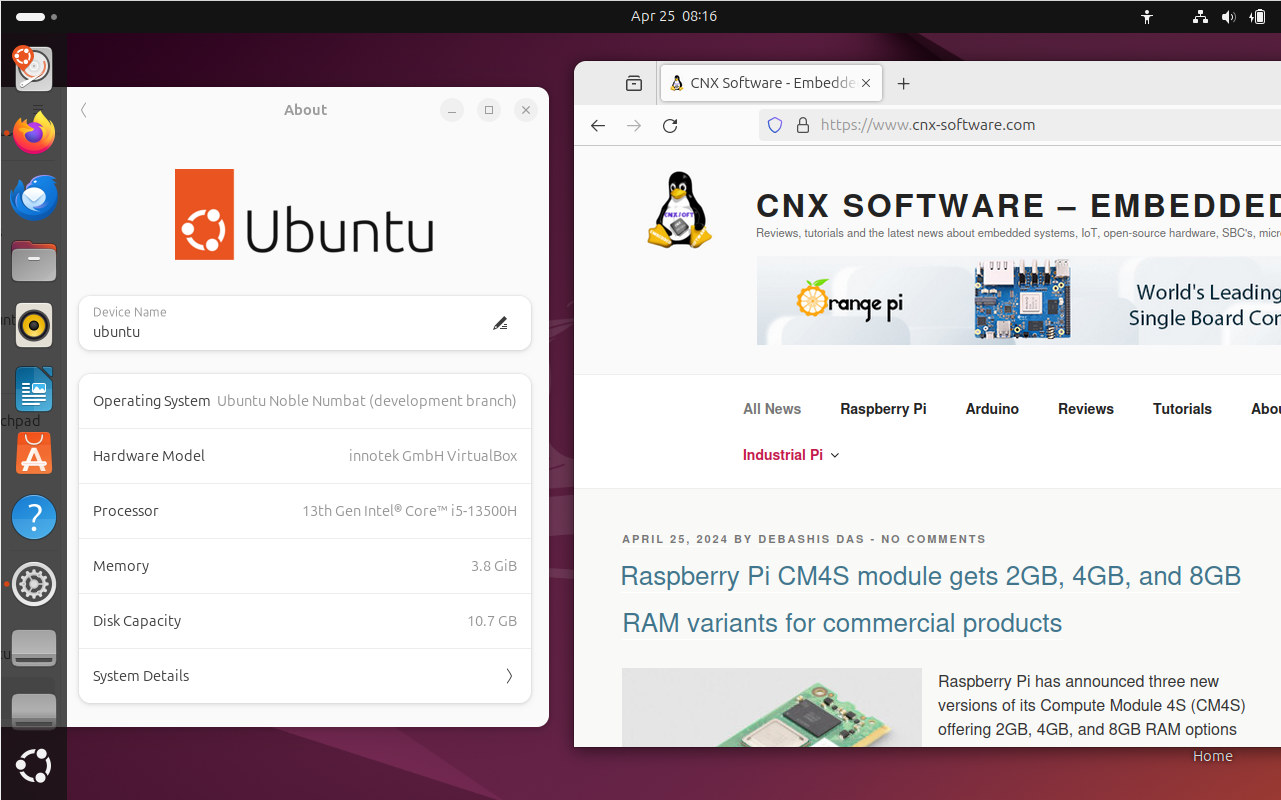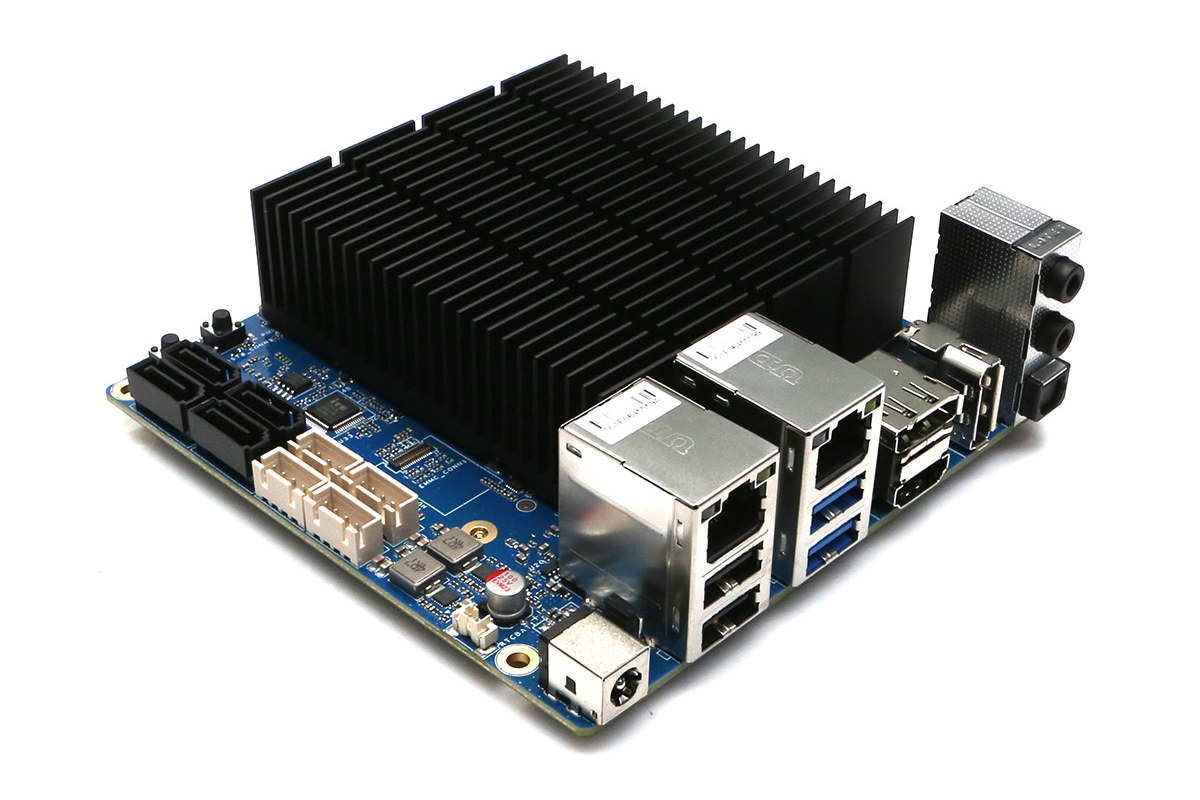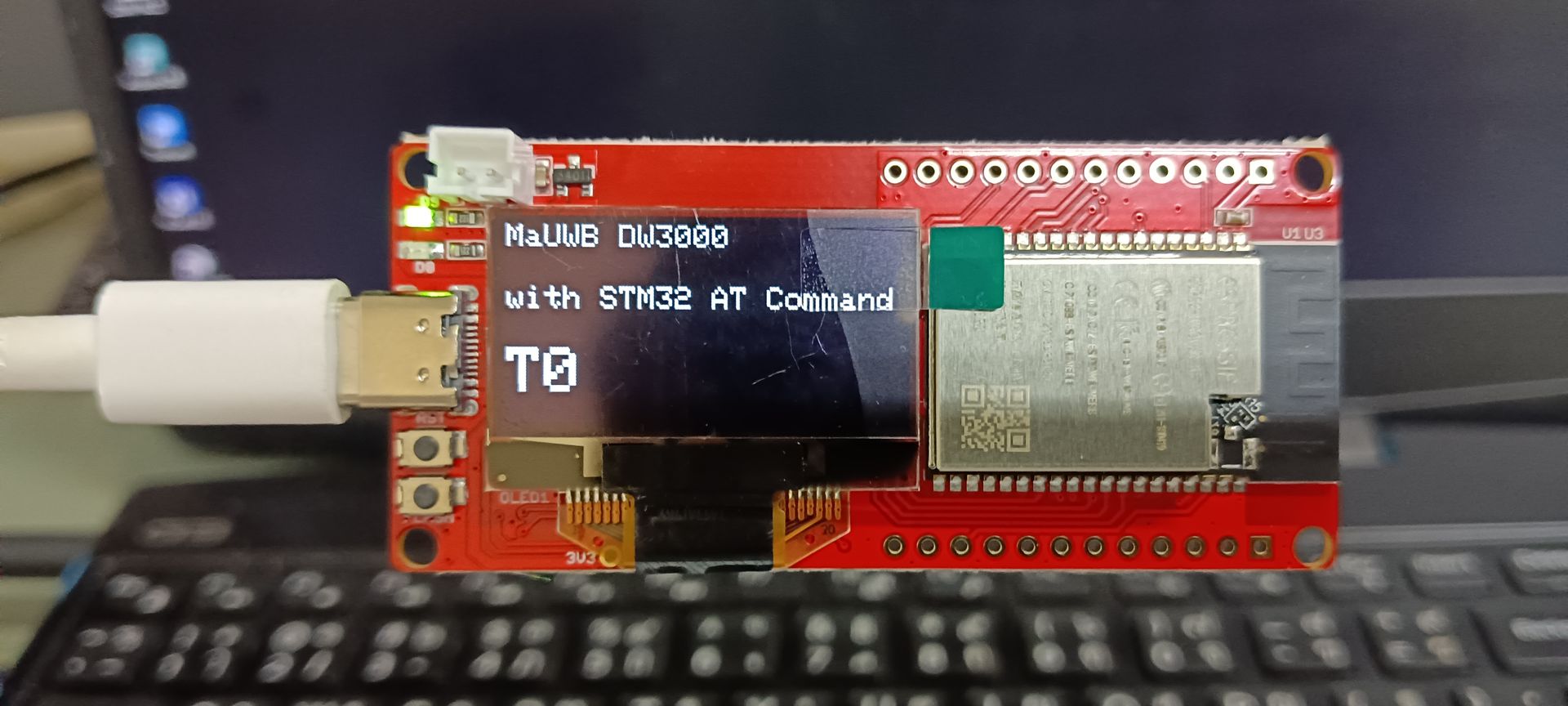AAEON’s RTC-1010RK is a 10.1-inch (1280 x 800) rugged tablet powered by a Rockchip RK3399 processor and can be equipped with up to 4GB LPDDR4 memory and 128GB eMMC flash. It offers robust connectivity with Wi-Fi, Bluetooth, and optional 4G LTE and Ethernet. It also supports GPS + GLONASS (Default), and BeiDou (Optional) for navigation. The RTC-1010RK is an IP65-rated tablet with protection against dust and water splashes. Additionally, it has programmable function keys, NFC/smart card readers, front (8MP) and rear (8MP) cameras, and the option to add a barcode scanner. The hot-swappable battery in the tablet ensures uninterrupted power, making it ideal for demanding field and industrial applications. It’s not the first rugged tablet from AAEON, as previously, we have written about the AAEON RTC-710AP 7-inch rugged tablet and the AAEON RTC-1010M Windows 10-based semi-rugged tablet. We also reviewed the Higole F7G Plus rugged tablet. Feel free to check […]
NXP i.MX 8M Plus powered DIN-Rail IoT gateway takes DIO, RS232, RS485, and ADC expansion modules
Compulab IOT-DIN-IMX8PLUS is a DIN Rail IoT gateway powered by an NXP i.MX 8M Plus AI SoC that takes various expansion modules with digital inputs and outputs (DIO), RS232, RS485, or ADC. The new model looks to be an evolution of the Compulab IOT-GATE-IMX8PLUS Arm Linux IoT gateway introduced in 2022 with many of the same features, except the IOT-DIN-IMX8PLUS is designed to be installed in a cabinet or other installation with a DIN Rail, and can easily be connected to additional I/O modules. Compulab IOT-DIN-IMX8PLUS specifications: SoC – NXP i.MX 8M Plus Quad or Quad-lite CPU Quad-core Arm Cortex-A53 processor @ up to 1.8 GHz Arm Cortex-M7 real-time core @ 800 MHz GPU – Vivante GC7000UL 3D GPU, Vivante GC520L 2D GPU VPU – 1080p H.265/H.264 video decoder & encoder DSP HiFi 4 DSP AI accelerator – 2.3 TOPS Neural Processing Unit (NPU) on i.MX 8M Plus Quad only […]
Raspberry Pi 5 vs Intel N100 mini PC comparison – Features, Benchmarks, and Price
The Raspberry Pi 5 Arm SBC is now powerful enough to challenge some Intel systems in terms of performance, while Intel has made the Intel Alder Lake-N family, notably the Intel Processor N100, inexpensive and efficient enough to challenge Arm systems when it comes to price, form factor, and power consumption. So we’ll try to match the Raspberry Pi 5 to typical Intel processor N100 mini PCs with a comparison of features/specifications, performance (benchmarks), and pricing with different use cases. That’s something I’ve been wanting to look into for a while but I was busy with reviews and other obligations (Hello, Mr. Taxman!), and this weekend I had some spare time to carry on the comparison. Raspberry Pi 5 vs Intel N100 mini PC specifications I’ll start by comparing the specifications of a Raspberry Pi 5 against the ones for typical Intel Processor N100-based mini PCs also mentioning optional features […]
Pivistation 5 – A Raspberry Pi 5 Camera Kit to quickly get started with computer vision (Crowdfunding)
Arducam Pivistation 5 is an all-in-one Raspberry Pi 5 camera kit that aims to provide a turnkey hardware and software solution to quickly get started with computer vision applications and offered with a choice of camera sensors designed for various applications. The system looks like a Raspberry Pi 5 SBC housed in the official case fitted with a camera. Three models are available, namely the “Hawkeye” featuring a high-resolution 64MP autofocus camera, the “Darksee” with an 8MP camera sensor with ultra low-light sensitivity, and the “Klarity” with a 20MP camera with fixed focus and a large 1-inch sensor. Pivistation 5 specifications All the cameras above rely on a rolling shutter, but the company is also working on the upcoming Arducam Pivistation 5 Swift model that includes a global shutter for robotics applications. Besides the pre-assembled hardware, the Arducam Pivistation 5 family aims to quicken the development process with pre-installed software […]
Ubuntu 24.04 LTS “Noble Numbat” released with Linux 6.8, up to 12 years of support
Canonical has just released Ubuntu 24.04 LTS “Noble Numbat” distribution a little over two years after Ubuntu 22.04 LTS “Jammy Jellyfish” was released. The new version of the operating system comes with the recent Linux 6.8 kernel, GNOME 46, and a range of updates and new features we’ll discuss in this post. As a long-term support release, Ubuntu 24.04 LTS gets a 12-year commitment for security maintenance and support, with five years of free security maintenance on the main Ubuntu repository, and Ubuntu Pro extending that commitment to 10 years on both the main and universe repositories (also free for individuals and small companies with up to 5 devices). This can be extended a further 2-year, or 12 years in total, for Ubuntu Pro subscribers who purchase the Legacy Support add-on. Canonical explains the Linux 6.8 kernel brings improved syscall performance, nested KVM support on ppc64el, and access to the […]
The Open Home Foundation will manage Home Assistant, ESPHome, Zigpy among over 240 open-source Smart Home projects
The Open Home Foundation is a non-profit organization that will manage over 240 Smart Home projects, standards, drivers, and libraries including Home Assistant, ESPHome, Zigpy, Piper, and Improv Wi-Fi with the goal of “fight[ing] for the fundamental principles of privacy, choice, and sustainability for smart homes”. The non-profit was introduced during the “State of the Open Home 2024” (see video embedded at the end of this article) with Nabu Casa – the for-profit company behind Home Assistant – transferring all their projects to the new entity, and the Open Home Foundation will also help with the development of critical external projects such as Z-Wave JS, WLED, Rhasspy, and Zigbee2MQTT. The foundation further explains the goal of teaming multiple projects together in a stronger structure: We’ve done this to create a bulwark against surveillance capitalism, the risk of buyout, and open-source projects becoming abandonware. To an extent, this protection extends even […]
ODROID-H4 – A Compact Alder Lake N-Series SBC with up to dual 2.5GbE and four SATA III ports
Hardkernel has just launched an upgrade to their ODROID-H3/H3+ Jasper Lake SBC, with the ODROID-H4, ODROID-H4+, and ODROID-H4 Ultra boards powered by Intel Processor N97 or Intel Core i3-N305 Alder Lake N-Series processors. The ODROID-H4 family supports up to 48GB DDR5-4800 memory and NVMe SSD storage, comes with up to two 2.5GbE, four SATA III ports, three 4K capable video output ports (HDMI and DisplayPort), a range of USB ports, and a 24-pin GPIO header. ODROID-H4 specifications compared to previous generation ODROID-H2+ and ODROID-H3 boards. The GPIO header offers the following interfaces for all models except for the ODROID-H2+: 2x I2C, 3x USB 2.0, 1x UART, 1x HDMI-CEC, ext. power button. The H2+ header has similar interfaces, but only one USB 2.0 and two UART. Some may note the maximum RAM capacity numbers differ from the data on Intel Ark, but the latter is not usually correct, and Hardkernel have […]
“MaUWB_DW3000 with STM32 AT Command” Review – Using Arduino to test UWB range, precision, indoor positioning
Hello, the device I am going to review is the MaUWB_DW3000 with STM32 AT Command. This is an Ultra-wideband (UWB) module from MakerFabs. The core UWB module on this board is the DW3000 UWB transceiver, and it is also equipped with an ESP32 microcontroller programmable with the Arduino IDE, as well as OLED display. The manufacturer claims that this UWB board resolves multiple anchors and tags mutual conflicts and supports up to 8 anchors and 64 tags. Additionally, the manufacturer has added an STM32 microcontroller to handle UWB multiplexing, allowing users to control the core UWB module by simply sending AT commands from an ESP32 microcontroller to the STM32 microcontroller. More information about this UWB board can be found on the manufacturer’s website. “MaUWB_DW3000 with STM32 AT Command” unboxing MakerFabs sent the package to me from China. Inside the package, there were 4 sets of the MaUWB_DW3000 with STM32 AT […]


